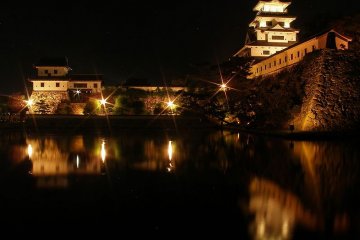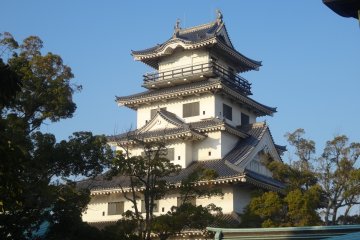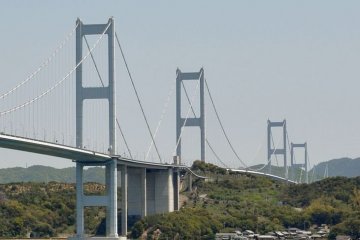
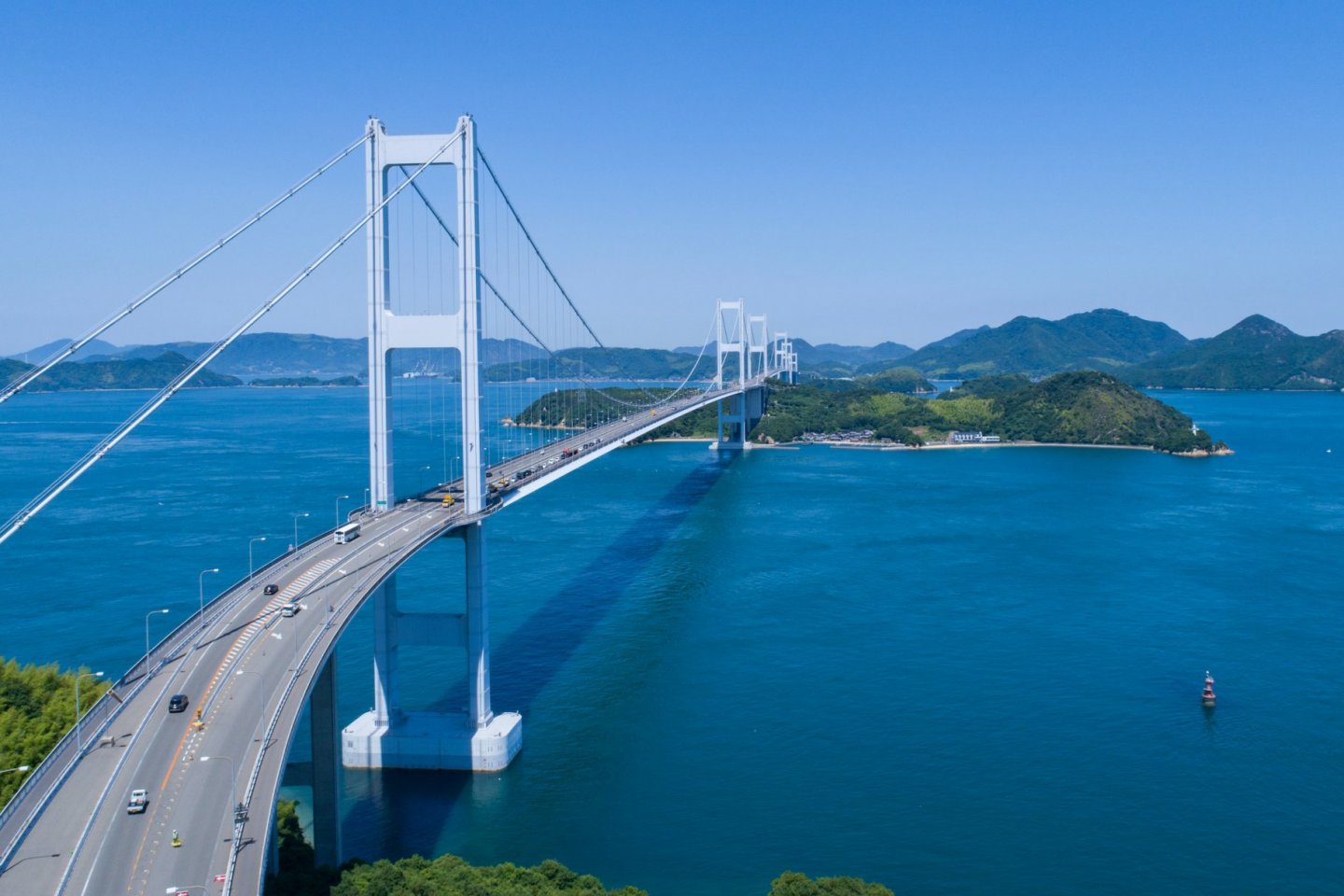
Imabari
Shipbuilding town
Things to do in Imabari
Upcoming Imabari Events

The Murakami Suigun Boat Race 2025
Sunday - Jul 27thThe Murakami Suigun Boat Race is a festival that takes place every July. The venue is Oshima Island in the Seto Inland Sea.
About Imabari
One of the features of Imabari is its arcades and commercial district arranged in a regular grid. Many of the buildings are old, and they speak of the city’s past vigour. Sadly, lots of them are now shuttered and in disrepair due to the slump in shipbuilding. Nonetheless, others are still thriving, and working hard to offer valuable products at good prices. One that will appeal particularly to foreign visitors is the souvenir and kimono shop Gofukuten Sugataya. Among these streets, there’s a great deal of old-time architectural charm from the Showa period and earlier, with signs painted in font faces not often seen anymore. In the covered arcades, many of the shops have a very 1960s feel, giving the impression of a timeslip.
Besides shipbuilding, the industries of Imabari include tiles, towels, and fishing, and these are much in evidence in one form or another. Imabari has many temples dotted among its residential and commercial premises, and the roofs of these temples are decorated in particularly fine style with long dragons along the gables. The city has had a huge Towel Museum for many years featuring the design possibilities of towels, and after conducting a branding exercise, these designs are now finding their way into attractive specialist towel shops in the city. I own a couple of towel scarves made in Imabari, and they’re a wonderful multipurpose accessory for the stylish, active man. Imabari is also known for its condiments for meats, many of which are produced at Nihon Shokken’s monstrous baroque factory, an outsize replica of the Belvedere Palace in Vienna. Factory tours and tastings are available.
Imabari Castle is one of the obvious landmarks of the city. It’s a very pretty castle, surrounded by a square moat of seawater, with fish that frequently jump out of the water. Dating originally from 1604, the castle keep was ordered destroyed in the Meiji period, and the current tower was built in 1980. It’s well worth a visit for its beauty, its views, and the fine collection of armor, weapons, and artworks on display.
The coast around Imabari is very attractive, and the beaches along the Seto Inland Sea are good for swimming. They’re characterized by orangey-yellow sand, backed with picturesque pines that give off a pleasant scent in the heat of summer.
Imabari is the second largest city in Ehime prefecture. Following a recent merger, the city has an estimated population of 172,384. It’s serviced by Imabari Station on the JR Shikoku system. This is a main station on the Yosan line with limited express service. The city is also home to a ferry terminal, which acts as a hub for many of the ferry systems that link the nearby smaller islands.
Imabari is home to six of the temples of the Shikoku Pilgrimage, from 54 to 59. These are Enmeiji, Nankobo, Taisanji, Eifukuji, Senyuji, and Kokubunji.
For eats in Imabari, besides the many fish dishes that are common throughout Ehime, visitors are urged to try the ‘yakibuta tamago meshi’, a concoction of seasoned pork with lightly fried eggs on rice, with a sweet, peppery sauce. Of these, Shigematsu Hanten is probably my favourite.
Imabari is linked to Hiroshima prefecture by the Shimanami Kaido, a series of bridges linking several of the islands of the Inland Sea.
MoreEhime Top 10
-
![Encounter the Best of Ehime Encounter the Best of Ehime]() 1
1Encounter the Best of Ehime
Ehime -
![Garyu Sanso: An Architectural Masterpiece in Harmony with Nature Garyu Sanso: An Architectural Masterpiece in Harmony with Nature]() 2
2Garyu Sanso: An Architectural Masterpiece in Harmony with Nature
Ehime -
![Memorable Matsuyama Memorable Matsuyama]() 3
3Memorable Matsuyama
Ehime -
![Azalea Season at Tomisuyama Park Azalea Season at Tomisuyama Park]() 4
4Azalea Season at Tomisuyama Park
Ehime -
![Nanrakuen Sotobori Sakura Festival Nanrakuen Sotobori Sakura Festival]() 5
5Nanrakuen Sotobori Sakura Festival
Ehime -
![Create Your Own Adventure in Uchiko, Ehime Prefecture Create Your Own Adventure in Uchiko, Ehime Prefecture]() 6
6Create Your Own Adventure in Uchiko, Ehime Prefecture
Ehime -
![Ehime Prefecture's Castles Ehime Prefecture's Castles]() 7
7Ehime Prefecture's Castles
Ehime -
![Uwajima City Guide Uwajima City Guide]() 8
8Uwajima City Guide
Ehime -
![Nanrakuen Azalea Festival Nanrakuen Azalea Festival]() 9
9Nanrakuen Azalea Festival
Ehime -
![Chocolate Al Fresco at GBC Kiriyama Chocolate Al Fresco at GBC Kiriyama]() 10
10Chocolate Al Fresco at GBC Kiriyama
Ehime
-
![Nanrakuen Iris Festival Nanrakuen Iris Festival]() 1
1Nanrakuen Iris Festival
Ehime -
![Niihama Drum Festival Niihama Drum Festival]() 2
2Niihama Drum Festival
Ehime -
![How to Get to Matsuyama How to Get to Matsuyama]() 3
3How to Get to Matsuyama
Ehime -
![The Mitsuhama Fireworks Festival The Mitsuhama Fireworks Festival]() 4
4The Mitsuhama Fireworks Festival
Ehime -
![Taimeshi, an Ehime Delicacy Taimeshi, an Ehime Delicacy]() 5
5Taimeshi, an Ehime Delicacy
Ehime -
![Matsuyama Nightlife Matsuyama Nightlife]() 6
6Matsuyama Nightlife
Ehime -
![Imabari Ferry Terminal Imabari Ferry Terminal]() 7
7Imabari Ferry Terminal
Ehime -
![Uwajima Ushioni Festival Uwajima Ushioni Festival]() 8
8Uwajima Ushioni Festival
Ehime -
![Discover Shikoku in Six Days Discover Shikoku in Six Days]() 9
9Discover Shikoku in Six Days
Ehime -
![The Murakami Suigun Boat Race The Murakami Suigun Boat Race]() 10
10The Murakami Suigun Boat Race
Ehime
-
![Create Your Own Adventure in Uchiko, Ehime Prefecture Create Your Own Adventure in Uchiko, Ehime Prefecture]() 1
1Create Your Own Adventure in Uchiko, Ehime Prefecture
Ehime -
![Garyu Sanso: An Architectural Masterpiece in Harmony with Nature Garyu Sanso: An Architectural Masterpiece in Harmony with Nature]() 2
2Garyu Sanso: An Architectural Masterpiece in Harmony with Nature
Ehime -
![Memorable Matsuyama Memorable Matsuyama]() 3
3Memorable Matsuyama
Ehime -
![Omori Japanese Candle Shop Omori Japanese Candle Shop]() 4
4Omori Japanese Candle Shop
Ehime -
![Nanrakuen Azalea Festival Nanrakuen Azalea Festival]() 5
5Nanrakuen Azalea Festival
Ehime -
![Nanrakuen Sotobori Sakura Festival Nanrakuen Sotobori Sakura Festival]() 6
6Nanrakuen Sotobori Sakura Festival
Ehime -
![Azalea Season at Tomisuyama Park Azalea Season at Tomisuyama Park]() 7
7Azalea Season at Tomisuyama Park
Ehime -
![Shimanami Kaido in Ehime Shimanami Kaido in Ehime]() 8
8Shimanami Kaido in Ehime
Ehime -
![Encounter the Best of Ehime Encounter the Best of Ehime]() 9
9Encounter the Best of Ehime
Ehime -
![Chocolate Al Fresco at GBC Kiriyama Chocolate Al Fresco at GBC Kiriyama]() 10
10Chocolate Al Fresco at GBC Kiriyama
Ehime
Where to eat in Imabari

Imabari: Guide to Food
AnonymousThe people of Imabari are often said to be impatient, and this is reflected in the way they cook. Consequently, the region has produced..

Shigematsu Hanten in Imabari
AnonymousShigematsu Hanten is a small Chinese restaurant tucked away in a commercial suburb. It serves the specialty of Imabari, pork and..

Hakurakuten in Imabari
AnonymousHakurakuten is well known for its yaki-buta-tamago-meshi, a specialty of Imabari. But fans of this dish believe that there are better..
Places to stay in Imabari


Imabari Station Hotel
AnonymousImabari Station Hotel is a budget hotel located conveniently close to Imabari railway station.

Imabari Kokusai Hotel
Mandy BartokClassy comfort can be found at the Imabari Kokusai Hotel in northern Ehime Prefecture.
Latest Imabari Reports
 8
8
Shimanami Kaido in Ehime
LilyShimanami Kaido is a cycling route leading from Onomichi City in the Hiroshima prefecture to Imabari city in Ehime prefecture. It..
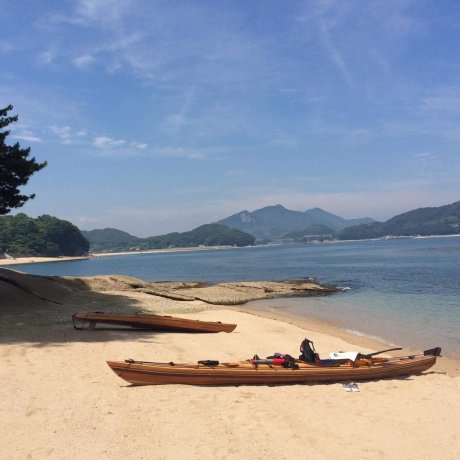
Cycling Paradise in Imabari, Ehime
Ryan MannschreckEnjoy a relaxing time full of fresh air, seascapes, and soft fluffy cotton towels on the islands that make up Imabari. A proverbial..
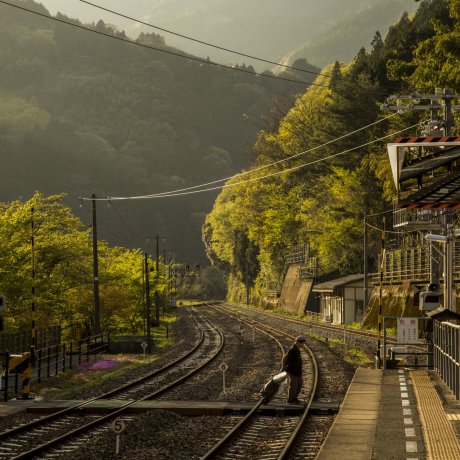
Discover Shikoku in Six Days
Ignatius KohBeing Japan's smallest island, Shikoku isn't the first place most first-time or even second-time travellers would cons..
About Imabari
Near the port in Imabari (今治市, Imabari-shi) is a huge, beautifully made ship’s propeller displayed as sculpture. It looks like a giant flower. In front of it are the words “Zo-sen no machi, Imabari” or “Shipbuilding town, Imabari”. This is the theme of the city, and even in the swanky Imabari Kokusai Hotel, large, scale models of the ships made in Imabari are displayed on every floor. Unfortunately, the Koreans have found ways to make ships more cheaply. Today, Imabari is on the ropes, and it shows.
One of the features of Imabari is its arcades and commercial district arranged in a regular grid. Many of the buildings are old, and they speak of the city’s past vigour. Sadly, lots of them are now shuttered and in disrepair due to the slump in shipbuilding. Nonetheless, others are still thriving, and working hard to offer valuable products at good prices. One that will appeal particularly to foreign visitors is the souvenir and kimono shop Gofukuten Sugataya. Among these streets, there’s a great deal of old-time architectural charm from the Showa period and earlier, with signs painted in font faces not often seen anymore. In the covered arcades, many of the shops have a very 1960s feel, giving the impression of a timeslip.
Besides shipbuilding, the industries of Imabari include tiles, towels, and fishing, and these are much in evidence in one form or another. Imabari has many temples dotted among its residential and commercial premises, and the roofs of these temples are decorated in particularly fine style with long dragons along the gables. The city has had a huge Towel Museum for many years featuring the design possibilities of towels, and after conducting a branding exercise, these designs are now finding their way into attractive specialist towel shops in the city. I own a couple of towel scarves made in Imabari, and they’re a wonderful multipurpose accessory for the stylish, active man. Imabari is also known for its condiments for meats, many of which are produced at Nihon Shokken’s monstrous baroque factory, an outsize replica of the Belvedere Palace in Vienna. Factory tours and tastings are available.
Imabari Castle is one of the obvious landmarks of the city. It’s a very pretty castle, surrounded by a square moat of seawater, with fish that frequently jump out of the water. Dating originally from 1604, the castle keep was ordered destroyed in the Meiji period, and the current tower was built in 1980. It’s well worth a visit for its beauty, its views, and the fine collection of armor, weapons, and artworks on display.
The coast around Imabari is very attractive, and the beaches along the Seto Inland Sea are good for swimming. They’re characterized by orangey-yellow sand, backed with picturesque pines that give off a pleasant scent in the heat of summer.
Imabari is the second largest city in Ehime prefecture. Following a recent merger, the city has an estimated population of 172,384. It’s serviced by Imabari Station on the JR Shikoku system. This is a main station on the Yosan line with limited express service. The city is also home to a ferry terminal, which acts as a hub for many of the ferry systems that link the nearby smaller islands.
Imabari is home to six of the temples of the Shikoku Pilgrimage, from 54 to 59. These are Enmeiji, Nankobo, Taisanji, Eifukuji, Senyuji, and Kokubunji.
For eats in Imabari, besides the many fish dishes that are common throughout Ehime, visitors are urged to try the ‘yakibuta tamago meshi’, a concoction of seasoned pork with lightly fried eggs on rice, with a sweet, peppery sauce. Of these, Shigematsu Hanten is probably my favourite.
Imabari is linked to Hiroshima prefecture by the Shimanami Kaido, a series of bridges linking several of the islands of the Inland Sea.
